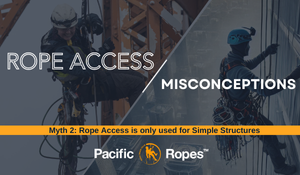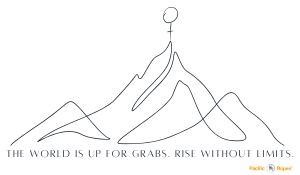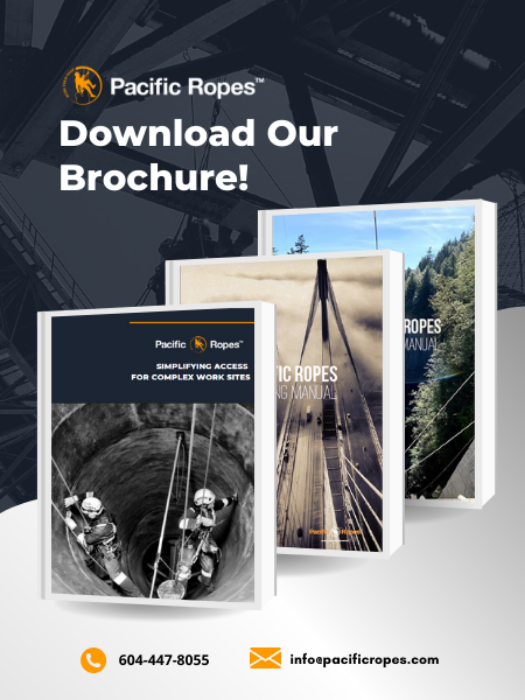**DISCLAIMER: This is not the official WorksafeBC website. The posts below are merely our interpretation and not official WorksafeBC regulation. To make sure you comply, please visit https://www.worksafebc.com/en.
If you're going to be performing rope access or requiring your employees to perform rope access, then YES, you'll need training and certification. Just to be clear, WorksafeBC defines performing rope access as:
"a technique in which a rope access system is used to provide a person with access to and from a workplace, commonly including suspension at the workplace, in such a way that a fall is prevented or arrested;"
The definition of a"rope access system" means:
"a system consisting of-(a) a sit harness or full body harness, (b) rope, lanyards and other connecting equipment, (c) anchors, and (d) other components such as ascenders, descenders, belay devices, backup devices and fall arresters, that usually employs 2 separately secured subsystems, one as a means of access and the other as a safety, secondary, belay or backup system, but does not include a boatswain's chair, also known as a bosun's chair, or a zipline;"
To sum it up, if you're going to be suspended on two ropes that are attached to anchors to perform work, and wearing a harness that is attached via lanyards and carabiners to various pieces of gear such as I'D's, asaps, Kongs, Ducs, carabiners, etc, then you're doing rope access. In that case, you'll need training and certification! If you're still not 100% sure that you're doing rope access, then please, give me a call to confirm or open up the chat box to your bottom right to talk!
So, what kind of training will you need?
WorksafeBC will accept any training that is described in any of the following publications:
- IRATA-ICOP (International Code of Practice) and General requirements for certification of personnel engaged in industrial rope access methods. These publications refer to the TACS (Training, Assessment, and Certification Scheme) when outlining IRATA training.
- SPRAT-Safe Practices for Rope Access Work and Certification Requirements for Rope Access Work.
- Scope of Practice (2012), Technical Handbook for Professional Mountain Guides (1999) and Climbing Gym Instructor Technical Manual (2003), published by the Association of Canadian Mountain Guides
- Cave Guiding Standards for British Columbia and Alberta (January 2004), published by the Canadian Cave Conservancy, and Companion Rescue Workshop (2011), published by British Columbia Cave Rescue
Whichever publication or association you plan on following, you'll need to receive the appropriate certification issued by any of the above associations.
If you’re performing rope access, you must be working in compliance with the safe work practices described by one of these associations. The association you choose to certify with should be appropriate to the work you’ll eventually be doing (OHS 34.5). SPRAT and IRATA are the two certifications recognized in Canada as being appropriate for industrial rope access work, while the following two have different applications.
Here at Pacific Ropes, we offer both IRATA and SPRAT training. To get a copy of any of the IRATA Publications or SPRAT publications, please send an email or open up the chat box!
How will WorksafeBC know if I have a certification or not?
You won't need to send WorksafeBC a copy of your certification or anything like that. However, if a WorksafeBC officer showed up to your work site, you'll need to be able to show them your certification and logbook on demand for inspection.
Is that it?
One last thing! Your employer must make sure you are trained to the Rope Access Plan that is being followed on whatever job you are on. It's not good enough to just talk about it, they'll need to document that you've been trained and that you understand the Rope Access plan and procedure.
For more information relating to rope access training, visit our Rope Access Training page!




